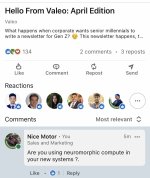Hi All,
Just an update on our Patent activity around the globe.
Currently we have 57 Patents Granted or Pending subject to the examiner completing his/her job.
Current countries we have placed these Patents are as follows:
USA 30
AUSTRALIA 11
EUROPE 5
WORLD 4
KOREA 3
BRAZIL 1
CANADA 1
ISRAEL 1
MEXICO 1
Strangely, my information says China isn't now among the above list, quite frankly, I personally couldn't care less about China.
Best regards.......Tech.
Just an update on our Patent activity around the globe.
Currently we have 57 Patents Granted or Pending subject to the examiner completing his/her job.
Current countries we have placed these Patents are as follows:
USA 30
AUSTRALIA 11
EUROPE 5
WORLD 4
KOREA 3
BRAZIL 1
CANADA 1
ISRAEL 1
MEXICO 1
Strangely, my information says China isn't now among the above list, quite frankly, I personally couldn't care less about China.
Best regards.......Tech.







